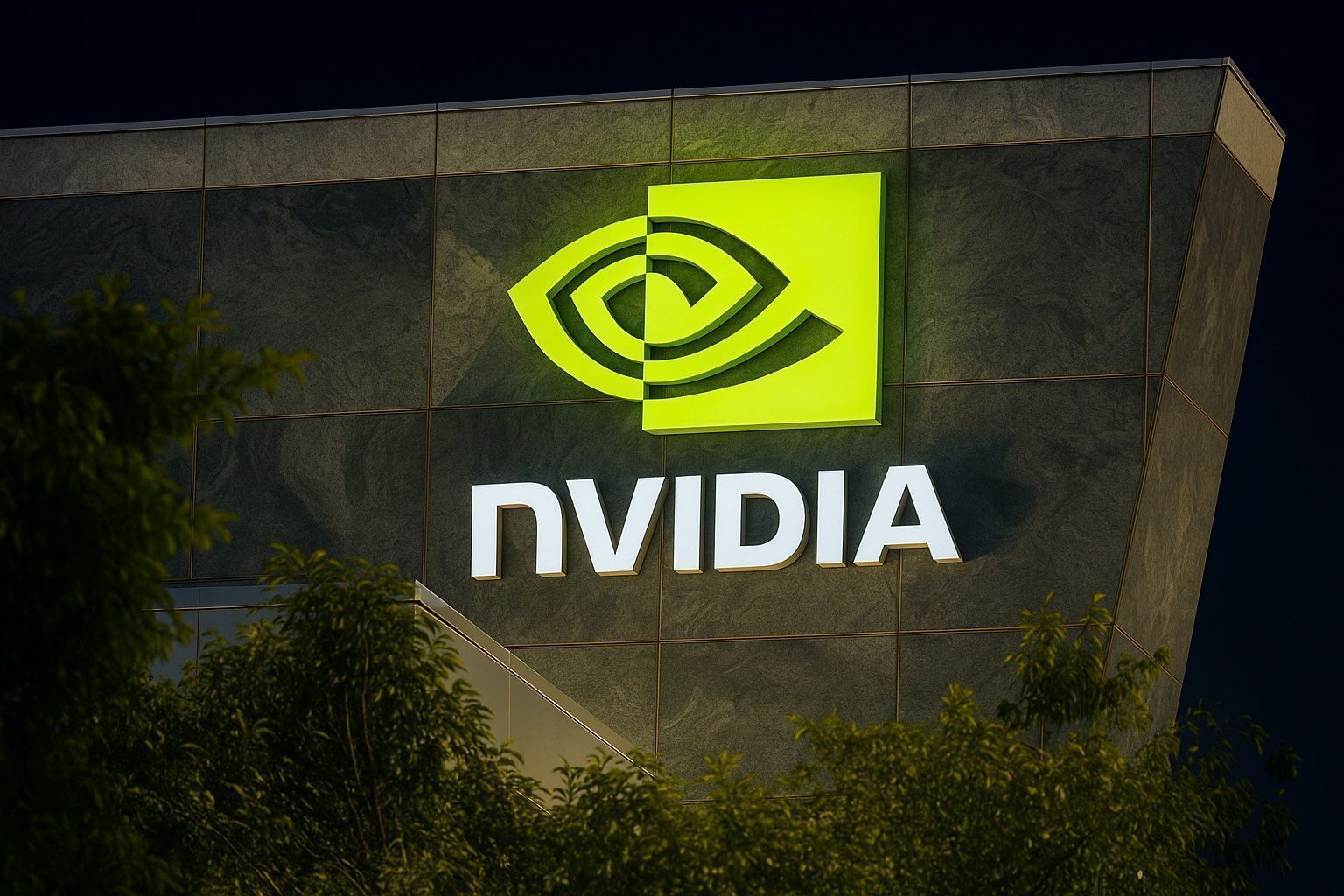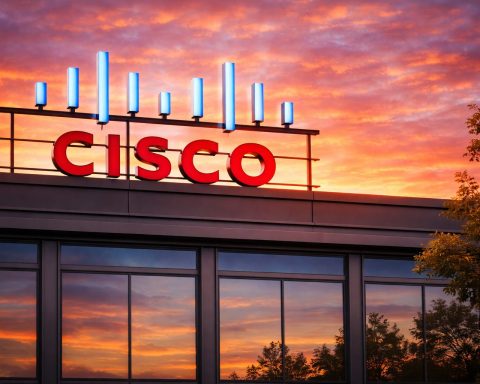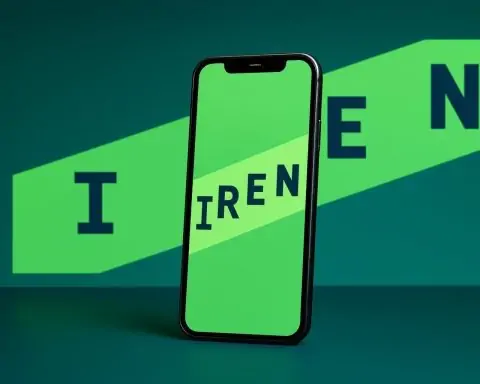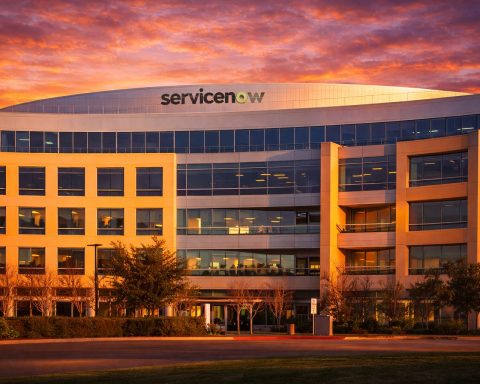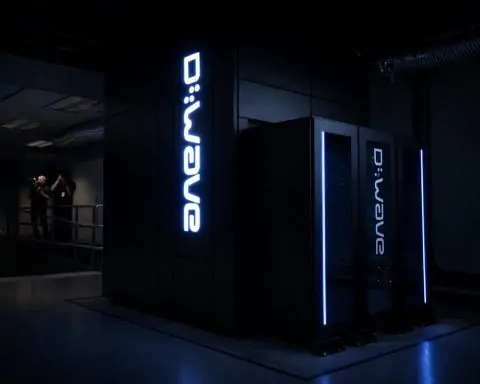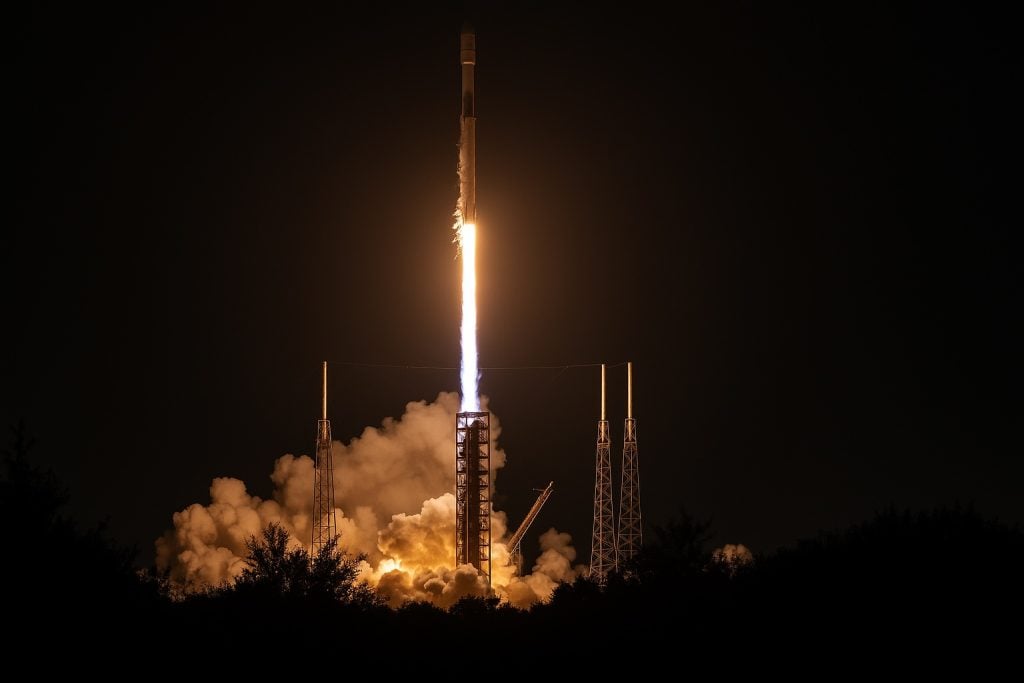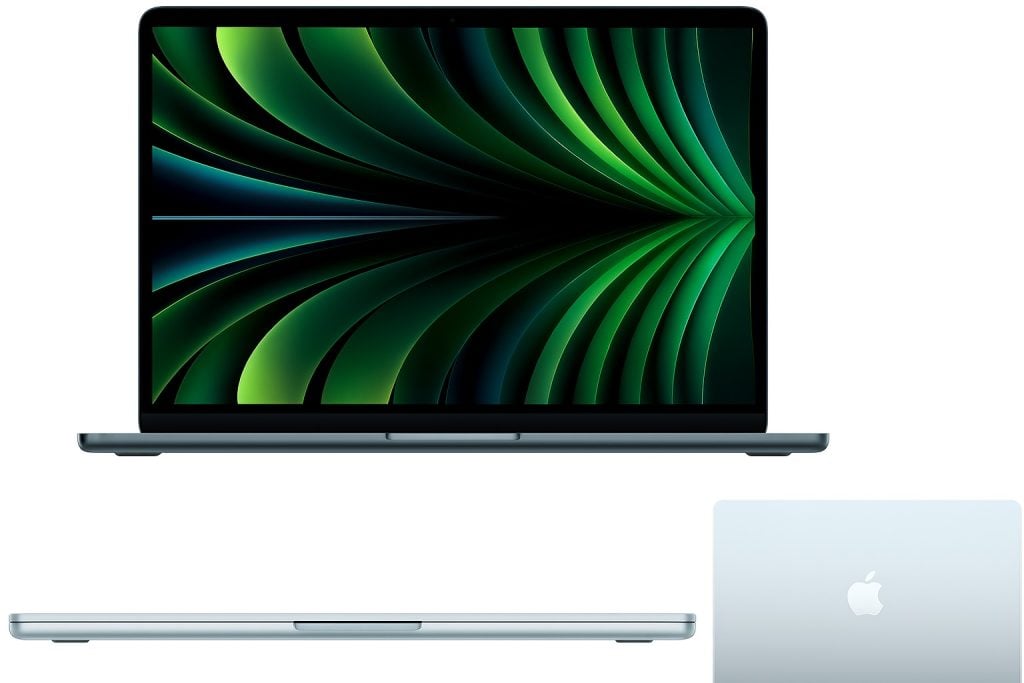- On July 11, 2025, Nvidia closed above a $4 trillion market cap, the first company ever to do so.
- On July 14, 2025, Nvidia closed at $164.07, down 0.5%, after trading between $162.02 and $165.49 intraday.
- Nvidia was up about 22% year-to-date and 27% year-over-year as of July 14–15, 2025.
- On July 15, 2025, Nvidia surged over 5% in pre-market trading to around $172 after news the U.S. would allow export licenses for its H20 AI GPUs to China.
- At a $4 trillion valuation, Nvidia accounts for roughly 7.5% of the entire S&P 500 by itself.
- Nvidia unveiled a China-tailored AI chip model and a whitelist system for approved Chinese buyers.
- CEO Jensen Huang sold 225,000 NVDA shares for about $36 million between July 8 and July 10, 2025, under a pre-arranged 10b5-1 plan.
- About 90% of analysts had buy ratings on NVDA, with Citi projecting another 20% upside and Goldman Sachs and Mizuho raising price targets.
- Nvidia had a five-day winning streak into July 15 and a 14-day RSI above 75, indicating overbought conditions.
- Institutional ownership of Nvidia’s float remains above 66%, with Signal Advisors Wealth LLC increasing its NVDA stake by 45,898 shares in Q2 to about 124,100 shares.
Stock Performance (July 14–15, 2025)
NVDA’s Wild Two-Day Ride: Nvidia’s stock saw volatile but ultimately bullish action over the past two sessions. On Monday, July 14, NVDA pulled back slightly, closing at $164.07 (down 0.5%) [1] [2] after trading between $162.02 and $165.49 intraday [3]. This minor dip came on lighter trading volume (~136.7 million shares) than its recent averages [4], indicating no heavy sell-off pressure. Volatility was moderate (about a 2% intraday swing), reflecting a calm consolidation after last week’s record-setting rally. Notably, Nvidia had just become the first company ever to close above a $4 trillion market cap days earlier [5] [6], and at Monday’s close it remained only 2% shy of its all-time high ($167.9 [7] reached on July 11). Even after the slight dip, NVDA was up ~22% year-to-date and +27% year-over-year [8] [9] – dramatically outperforming the broader market.
Tuesday’s Surge: The bulls roared back on July 15. In pre-market trading Tuesday, NVDA spiked over 5% on a major news catalyst (see below), indicating an opening price near $172 [10]. This jump put Nvidia on track to far outpace the overall market on the day. U.S. equity futures were only modestly higher ahead of Tuesday’s open, but NVDA’s news-fueled rally was poised to lift the tech sector, underscoring the stock’s outsized influence. (At a $4T valuation, Nvidia now accounts for roughly 7.5% of the entire S&P 500 by itself [11]!) All told, Nvidia’s stock is hovering around historic highs, with fresh catalysts rekindling its upward momentum.
NVDA vs. Market and Competitors
Lagging Then Leading: Nvidia’s slight Monday dip lagged the broader indices – the Nasdaq Composite hit a new record, rising 0.3% that day [12], and the S&P 500 inched up 0.1%. NVDA’s –0.5% return Monday was a mild underperformance as traders digested trade-war news. By Tuesday, however, Nvidia was leading the market higher. Its pre-market pop came as index futures were only mixed [13], suggesting NVDA would handily outrun blue-chip benchmarks once trading began.
Peers in the Semiconductor Space: Among key chip-sector rivals, performance was mixed. Advanced Micro Devices (AMD) – often seen as Nvidia’s closest competitor in AI chips – was virtually flat on Monday (closing around $146.24, just –0.12%) [14]. Intel (INTC), still struggling with its turnaround, dipped about 0.5% Monday to the low-$23 range (similar to Nvidia’s percentage pullback) [15]. In Tuesday’s pre-market, AMD jumped ~3% alongside Nvidia [16], as investors anticipated that Nvidia’s positive news on China would lift the broader semiconductor group. Intel’s move was more muted, as its fortunes are less tied to AI GPU sales.
The relative scale of Nvidia’s dominance has become staggering. At $4 trillion, Nvidia’s market cap dwarfs other chipmakers – it’s worth more than 15 times AMD ($237 billion) and nearly 40 times Intel ($100 billion) combined [17] [18]. Remarkably, Nvidia is now valued higher than the entire German stock market (Germany’s exchanges sum to about $3.1 trillion) [19]. This highlights Nvidia’s status as the undisputed heavyweight of the industry. Its recent rally has even put it ahead of tech titans like Microsoft ($3.7T) and Apple ($3.1T) in market value [20]. In short, Nvidia has become the semiconductor sector’s pacesetter, and its stock movements heavily influence market sentiment for tech at large.
Major News: China AI Chip Sales Greenlight
The game-changing news driving Tuesday’s surge was Nvidia’s announcement that the U.S. government will allow it to resume selling its advanced AI chips to China. Late July 14, Nvidia confirmed it is filing applications for export licenses and has “assurances” from Washington that its high-end H20 AI GPUs can be shipped to Chinese customers [21] [22]. This marks a major reversal of earlier export curbs. Back in April, the Trump administration had expanded chip export bans – even blocking Nvidia’s China-specific H20 chips – which Nvidia said would cut $15 billion from its revenue [23] [24]. The ban’s hit was so severe that Nvidia took a $4.5 billion charge last quarter related to unsellable Chinese inventory [25].
Supply Scramble: Now, with the ban lifted, Chinese tech firms are reportedly scrambling to buy Nvidia’s AI chips. Internet giants like ByteDance and Tencent are already submitting orders, per Reuters [26] [27]. Nvidia is even implementing a “whitelist” system for approved Chinese buyers to streamline the process [28]. Simultaneously, Nvidia unveiled a new AI chip model tailor-made for China, designed to meet U.S. export rules [29]. CEO Jensen Huang is currently in Beijing and plans to speak at a supply chain expo on Wednesday, signaling the company’s eagerness to rebuild its China business [30] [31]. Huang has publicly criticized the export curbs as a “failure,” noting that China represents a massive market of AI developers and a “$50 billion opportunity” for U.S. tech by 2026 [32] [33].
Market Impact: Investors greeted the news as a huge bullish catalyst. Nvidia’s shares jumped ~5% pre-market on July 15 and rival AMD rose 3%+ in sympathy [34]. Restoring access to China’s hungry AI market could unlock significant revenue that many on Wall Street had already “written off” as lost. “This is a major catalyst for Nvidia shares, as many had written off the chance of any meaningful revenue coming from China,” Matt Britzman, senior equity analyst at Hargreaves Lansdown, told Reuters [35] [36]. It also eases a key geopolitical risk that had been weighing on the stock. A Chinese Foreign Ministry spokesperson, in response to Nvidia’s plans, lauded opposition to the “politicisation… and suppression” of tech trade [37] – suggesting the deal could even cool tech tensions between the U.S. and China.
Beyond China, the past two days saw few other developments as dramatic. However, traders kept an eye on tariff news (President Trump threatened new tariffs on Mexico and the EU starting Aug. 1, rekindling trade policy uncertainty [38]) and on the Tuesday morning inflation report (CPI). Those macro factors took a backseat once Nvidia’s China headline hit. In company-specific news, one notable item was insider selling: CEO Jensen Huang sold 225,000 NVDA shares (roughly $36 million worth) between July 8–10 at prices ~$158–164 [39] [40]. The sales were part of a pre-arranged 10b5-1 plan and amounted to a mere 0.03% of his total holdings (Huang still owns about 858 million shares via trusts and entities) [41] [42]. While sizable in absolute terms, Huang’s light trimming of his stake was expected and did not alter the stock’s trajectory – especially as strong fundamental news (like the China deal) quickly overshadowed any insider selling concerns.
Analyst Commentary and Price Targets
Wall Street’s Take: Nvidia’s breathtaking run has analysts buzzing. Most experts remain bullish, seeing further upside even after the $4T milestone. In fact, nearly 90% of analysts have buy ratings or equivalents on NVDA [43]. Citi, Mizuho, and Goldman Sachs all recently raised their price targets in response to surging AI demand [44]. Citi’s Atif Malik projected another +20% upside for NVDA, upping his estimates as he now believes the data-center AI market could top $560 billion in the next three years (up from $500B prior) [45]. James Schneider of Goldman Sachs is also standing by his Buy rating, citing Nvidia’s “widening customer base” that now spans cloud giants, healthcare, and even defense – evidence that AI adoption is broadening beyond just Big Tech [46].
Even traditionally cautious voices acknowledge Nvidia’s dominance. One note from Swissquote Bank warned that trade tensions and competition are risk factors, but conceded that Nvidia is central to the AI race. “Trade tensions and tariffs are a risk, as is competition. Greater AI adoption could shift part of the demand toward cheaper alternatives,” wrote Ipek Ozkardeskaya, adding that Nvidia’s position is strong but not unassailable if rivals or new regulations emerge [47] [48]. This hints at longer-term concerns (e.g. competing chips from AMD or in-house silicon from cloud providers), yet so far no challenger has dented Nvidia’s lead in cutting-edge AI silicon.
Sky-High Targets: Some analysts are unabashedly optimistic. Dan Ives of Wedbush Securities argues that Nvidia’s rally is far from over – he foresees a potential $5 trillion market cap by 2026. Calling this “a historic moment for Nvidia,” Ives wrote that “the tech space is flexing its muscles, and this speaks to the AI Revolution hitting its next stage of growth.” [49] His bullish case rests on Nvidia’s 90% share of the AI GPU market and the “capital frenzy” around AI infrastructure spending [50], which he and others believe could sustain years of growth for the company. Similarly, at least one major investment manager told the Los Angeles Times that Nvidia’s valuation – while enormous – “is not the end” of its growth. They note NVDA still trades around 33× forward earnings, actually below its five-year average multiple [51] [52]. In other words, Nvidia’s earnings are rising so fast that its P/E ratio hasn’t blown out in proportion – suggesting the stock’s fundamentals are catching up to its price. Bulls argue that as long as Nvidia continues to “beat and raise” its guidance (as it has consistently), the stock can justify further gains [53].
That said, a few skeptics remain. A handful of analysts worry about valuation and have hold or neutral ratings (and short interest in NVDA remains low, around 1% of float [54] [55], implying little outright bearish positioning). The consensus price target is in the mid-$170s [56], only slightly above current levels after the recent spike, which implies expectations may need to rise further to fuel much more upside. For now, however, sentiment is overwhelmingly positive. As one portfolio manager put it, “There’s obviously tremendous demand for Nvidia’s chips… It’s been a pretty remarkable 90-day period” [57] [58]. Wall Street appears to agree that Nvidia’s leadership in AI – and the trillion-dollar opportunities that come with it – give it a long growth runway from here.
Technical Analysis: Chart Signals & Trends
Overbought or More Breakouts? Nvidia’s price chart is a picture of strong upward momentum, though some indicators hint at near-term exhaustion. The stock has now logged a five-day winning streak heading into July 15 [59], placing it near its record high (~$167.89 on 7/11). Technical traders are eyeing that $168 area as the next resistance; a decisive breakout above that level could signal another leg higher, whereas failure to surpass it might trigger a pullback or consolidation. Support levels to watch on the downside include roughly $155 (the vicinity of NVDA’s 20-day moving average) and around $140–$145 (a zone with prior price congestion and near the rising 50-day moving average) [60] [61]. Below that, there’s stronger volume-backed support in the mid-$130s [62] [63], though such a deep dip would require a significant sentiment shift.
Momentum oscillators show extreme readings. Nvidia’s 14-day Relative Strength Index is above 75, well into the “overbought” zone [64]. Historically, an RSI above 70 suggests a stock has run up quickly and could be due for at least a short-term breather. Indeed, analysts at Schaeffer’s Investment Research note this elevated RSI “suggests a short-term correction could be imminent” for NVDA [65]. It’s worth noting that previous rallies in Nvidia this year have seen brief pullbacks when RSI stretched into the mid-70s or higher – only for the stock to resume climbing once it digested those gains.
Trend and Moving Averages: All key moving averages are sloping upward, reflecting the firm uptrend. NVDA is trading well above its 50-day and 200-day averages (by ~17% and 25%, respectively) [66] [67] – a sign of strength, albeit one that can invite mean-reversion in the short run. Short-term traders are watching the $165–$166 zone (very near Monday’s high) which coincides with an upper trendline; a push above ~$166 could “indicate a stronger rate of rising,” according to technical analyses [68] [69]. On the flip side, initial support around $162–$160 (recent lows and the 10-day moving average) held firm during Monday’s dip, and a break below that could signal a deeper correction ahead [70]. So far, every minor dip has been met with eager buyers – volume has often dried up on down days (as happened on July 14) which is actually a positive technical sign, indicating no rush for the exits [71] [72].
Chart Pattern: Nvidia’s chart could be interpreted as a steep rising channel since its May lows, with higher highs and higher lows forming an aggressive uptrend. There’s no classic “top” pattern visible yet – no bearish divergences of note – though traders will be alert for any sign of trend fatigue (like lower highs or a high-volume reversal day). For now, bulls remain in control. The path of least resistance is still upward unless NVDA falls below key support levels. In summary, technicals suggest Nvidia’s rally is stretched in the near term (overbought conditions), but the uptrend remains intact. A period of consolidation or a mild pullback to work off overbought signals could actually strengthen the base for Nvidia’s next move higher, provided fundamental news stays favorable.
Options Activity and Institutional Flows
Frenzy in the Options Market: Nvidia’s stock isn’t just a favorite of equity investors – it’s also one of the hottest tickets in the options market. In fact, over the last two weeks NVDA has consistently topped the market in options trading volume, reflecting intense speculative interest [73]. According to Schaeffer’s data, Nvidia saw an astonishing 19.58 million call options traded vs. 12.02 million puts in the past 10 sessions [74]. That call-skewed activity indicates traders have been betting bullishly, using calls to leverage Nvidia’s upside. Many of the most active contracts have been out-of-the-money calls in coming months – for example, August $160 calls and September $130/$140 calls (often traded as part of bullish credit spreads) have seen heavy action [75] [76]. This suggests some traders are selling nearer-term volatility and positioning for Nvidia to stay strong above those strike levels through the summer.
Despite the huge demand for options, implied volatility in NVDA remains relatively low. Nvidia’s Schaeffer’s Volatility Index (SVI) is around 36%, near the 2nd percentile of its annual range [77]. In plain English, options prices are in a low-vol regime – surprisingly cheap given Nvidia’s recent run. This likely reflects a combination of factors: actual realized volatility had moderated in June/early July, and perhaps traders expect the China news to reduce downside risks. A low SVI “implies that options players are pricing in lower-than-usual volatility expectations” ahead [78]. For investors, this could be an opportunity – option premiums are not inflated, so hedging or speculative plays can be entered at relatively reasonable cost. Indeed, some hedgers might want protection given how far, fast NVDA has run, while speculators might see low IV as a chance to buy calls for the next leg up.
Institutional Buying/Selling: On the institutional side, fund flows continue to show interest in NVDA. For example, a recent SEC filing (detailed July 14) revealed that Signal Advisors Wealth LLC increased its Nvidia stake by 45,898 shares during Q2, a ~$5.76 million purchase [79] [80]. This brought that fund’s total NVDA holdings to ~124,100 shares. While not a market-moving stake by itself, it’s indicative of how many asset managers have been adding to Nvidia on dips. Even after the Q2 run-up, NVDA now comprises about 1.5% of Signal’s portfolio [81] [82] – a sign that institutions feel compelled to own a piece of this AI leader. In aggregate, institutional ownership of Nvidia remains high (over 66% of the float) [83], and many large ETFs (from QQQ to tech sector funds) have NVDA as a top holding, meaning passive inflows have also buoyed the stock.
On the other side, aside from Huang’s planned sales, there hasn’t been notable insider selling or big fund unloading reported in this two-day span. Short sellers appear cautious on stepping in front of Nvidia – short interest is minimal [84] and we’ve seen no large bearish options bets grabbing headlines. In fact, options positioning tilts bullish, as noted, and put/call ratios remain call-heavy. All this indicates that big money is largely riding the Nvidia wave, not fighting it. Of course, that can change if the narrative shifts, but at least through mid-July, institutional and options activity both reflect confidence in Nvidia’s trend. As one options analyst quipped, “Nvidia is the first-ever member of the $4T club, and options bulls are making their move” to keep it that way [85] [86].
Retail Sentiment and Social Media Buzz
Retail Traders Remain Enthused: Nvidia is one of the most popular stocks among retail investors, and the buzz on social media over July 14–15 shows mostly positive sentiment. On Stocktwits (a platform tracking retail trader sentiment), Nvidia’s sentiment reading was bullish (64/100) late last week as it hit $4T [87]. Message volumes around NVDA were “high,” indicating feverish discussion among traders [88]. That bullish sentiment presumably got another boost with the China news – many retail traders cheer any development that promises new growth avenues for Nvidia. On Reddit forums like r/stocks and r/wallstreetbets, Nvidia has been a frequent topic; memes abound about “NVDA to the moon” fueled by AI mania. However, some posters also urge caution about the lofty valuation, showing that not everyone in the retail crowd is purely chasing momentum. Overall, the retail mood leans optimistic – Nvidia is seen as the quintessential “AI play,” and FOMO (fear of missing out) remains a powerful force given the stock’s ability to defy skeptics.
Interestingly, data from Stocktwits earlier in the month showed retail sentiment oscillating between neutral to bullish despite the stock’s strong performance [89]. This suggests many small investors are happy to hold NVDA for the long term, not just trade it for a quick flip. In late June when NVDA dipped, retail sentiment actually turned mildly bearish (a 27/100 reading) as some got spooked [90] – but that pessimism proved short-lived as Nvidia quickly rebounded, punishing the doubters. By contrast, after this week’s news, most retail traders seem to view any pullback as a buying opportunity, given Nvidia’s fundamental strength and leadership in AI.
Social Media Chatter: Twitter (X) and YouTube finance channels lit up with the China announcement. Many influencers highlighted how resuming Chinese sales could add billions in revenue for Nvidia that was previously at risk – a narrative retail investors latched onto. There’s also excitement around Nvidia’s upcoming product cycle (e.g. next-gen “Blackwell” chips) and speculation that the company might issue a stock split or hike its tiny dividend with the stock at these heights (though no concrete news on those fronts during July 14–15). The AI hype that propelled Nvidia earlier in 2025 is still very much alive on social media. To gauge it: trending hashtags included #AIrevolution and #NVDA4Trillion, and some traders joked that Nvidia is now “bigger than countries” – a reference to it eclipsing economies and indexes, as noted above (indeed, “Nvidia’s market cap is now higher than GDP of 189 countries” was a headline making the rounds) [91].
In summary, retail sentiment is strongly positive, if a bit awestruck at how fast NVDA has climbed. There is an undercurrent of caution (memories of past bubbles linger), but so far Nvidia’s execution has validated the optimism. As long as the company continues delivering growth and owning the AI narrative, the retail crowd appears content to “buy the dips” and let this winner run. The stock’s near-term fate may ultimately hinge on institutional moves and earnings results, but the retail cheerleaders will certainly be along for the ride – tweeting, posting, and meme-ing every step of the way.
Conclusion
Bottom Line: The July 14–15 period showcased Nvidia at the center of the market’s attention. The stock weathered a trade-induced wobble, then surged to new heights on a breakthrough China development. Nvidia’s fundamentals and momentum appear to be aligning: its financial performance (and guidance) will be the next catalyst as earnings season looms, but in the meantime, analysts remain bullish, technicals show an intact uptrend (if a bit hot), and investors of all stripes are largely in sync with the view that Nvidia is the leader of the AI revolution. As a result, NVDA’s stock has been on fire, and its valuation – unprecedented as it is – continues to find support from Wall Street and Main Street alike.
Still, traders will be watching how Nvidia handles its new challenges and opportunities. The return of Chinese demand could meaningfully boost revenue, but also will require navigating U.S. export controls carefully. Any macro hiccup or AI spending slowdown could test Nvidia’s lofty price. And technically, a period of consolidation to digest recent gains would be natural. But for now, Nvidia’s narrative is one of strength: a company shattering records, expanding its market, and largely carrying the tech sector on its shoulders. In just two days, we’ve seen NVDA affirm why it commands a $4 trillion tag – and if the current sentiment holds, that milestone may only be the beginning of Nvidia’s next chapter [92] [93].
Sources: Bloomberg/LA Times via L.A. Times [94] [95]; Reuters [96] [97]; Investopedia [98] [99]; Reuters (market cap milestone) [100] [101]; InvestorsObserver [102] [103]; Motley Fool/Nasdaq [104] [105]; Schaeffer’s Investment Research [106] [107]; Stocktwits News [108] [109].
References
1. www.investopedia.com, 2. stockinvest.us, 3. stockinvest.us, 4. stockinvest.us, 5. www.reuters.com, 6. www.reuters.com, 7. finviz.com, 8. www.latimes.com, 9. www.nasdaq.com, 10. www.reuters.com, 11. www.latimes.com, 12. www.investopedia.com, 13. www.investopedia.com, 14. finviz.com, 15. finviz.com, 16. www.reuters.com, 17. finviz.com, 18. finviz.com, 19. investorsobserver.com, 20. www.latimes.com, 21. www.reuters.com, 22. www.reuters.com, 23. www.reuters.com, 24. www.reuters.com, 25. www.investopedia.com, 26. www.reuters.com, 27. www.reuters.com, 28. www.reuters.com, 29. www.reuters.com, 30. www.reuters.com, 31. www.reuters.com, 32. stocktwits.com, 33. stocktwits.com, 34. www.reuters.com, 35. www.reuters.com, 36. www.reuters.com, 37. www.reuters.com, 38. www.investopedia.com, 39. www.stocktitan.net, 40. www.stocktitan.net, 41. www.stocktitan.net, 42. www.stocktitan.net, 43. www.latimes.com, 44. investorsobserver.com, 45. investorsobserver.com, 46. investorsobserver.com, 47. www.reuters.com, 48. www.reuters.com, 49. investorsobserver.com, 50. investorsobserver.com, 51. www.reuters.com, 52. www.latimes.com, 53. www.latimes.com, 54. finviz.com, 55. finviz.com, 56. finviz.com, 57. www.latimes.com, 58. www.latimes.com, 59. www.schaeffersresearch.com, 60. stockinvest.us, 61. stockinvest.us, 62. stockinvest.us, 63. stockinvest.us, 64. www.schaeffersresearch.com, 65. www.schaeffersresearch.com, 66. finviz.com, 67. finviz.com, 68. stockinvest.us, 69. stockinvest.us, 70. stockinvest.us, 71. stockinvest.us, 72. stockinvest.us, 73. www.schaeffersresearch.com, 74. www.schaeffersresearch.com, 75. www.schaeffersresearch.com, 76. www.schaeffersresearch.com, 77. www.schaeffersresearch.com, 78. www.schaeffersresearch.com, 79. www.nasdaq.com, 80. www.nasdaq.com, 81. www.nasdaq.com, 82. www.nasdaq.com, 83. finviz.com, 84. finviz.com, 85. www.schaeffersresearch.com, 86. www.schaeffersresearch.com, 87. stocktwits.com, 88. stocktwits.com, 89. stocktwits.com, 90. stocktwits.com, 91. stocktwits.com, 92. investorsobserver.com, 93. www.latimes.com, 94. www.latimes.com, 95. www.latimes.com, 96. www.reuters.com, 97. www.reuters.com, 98. www.investopedia.com, 99. www.investopedia.com, 100. www.reuters.com, 101. www.reuters.com, 102. investorsobserver.com, 103. investorsobserver.com, 104. www.nasdaq.com, 105. www.nasdaq.com, 106. www.schaeffersresearch.com, 107. www.schaeffersresearch.com, 108. stocktwits.com, 109. stocktwits.com
